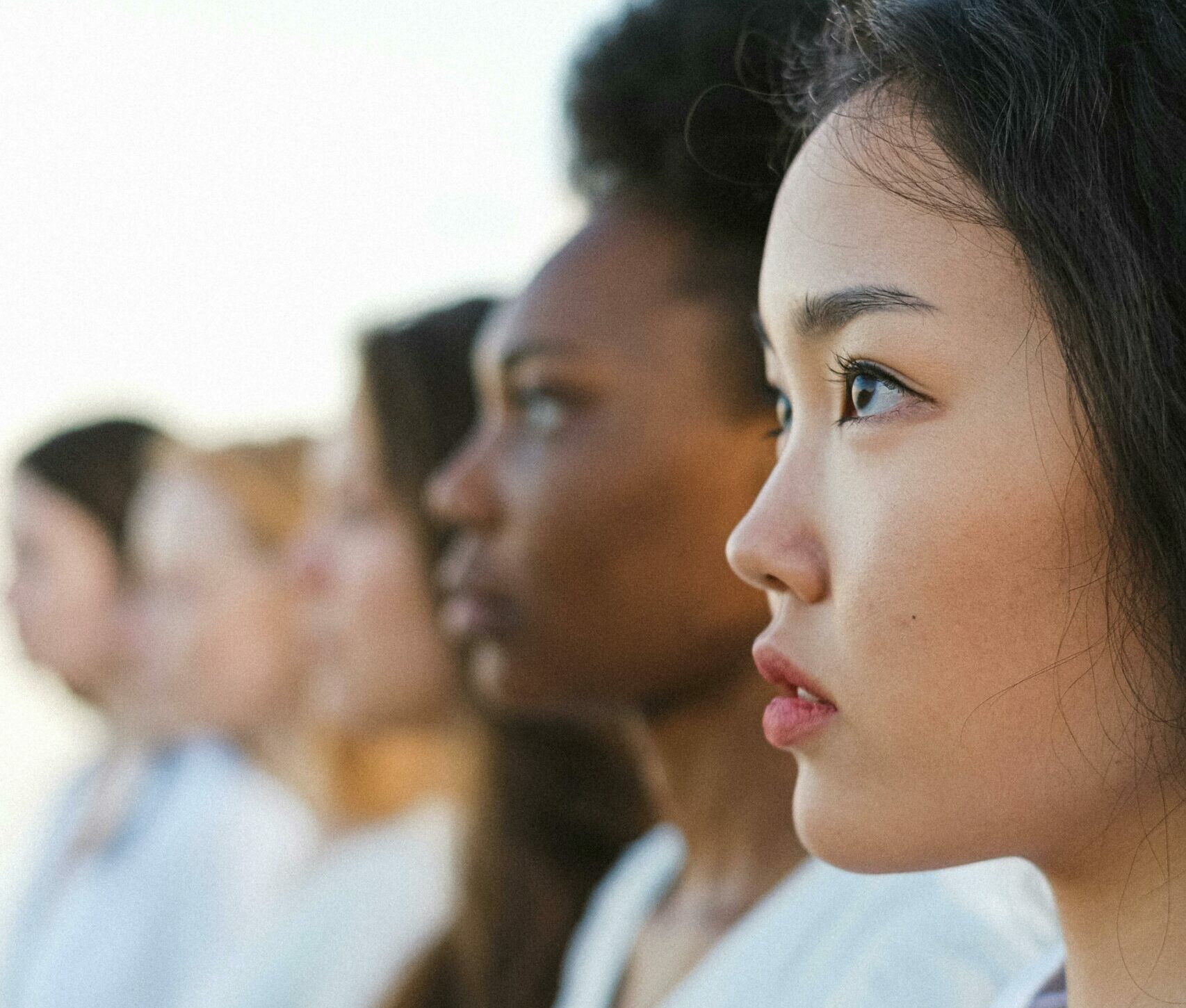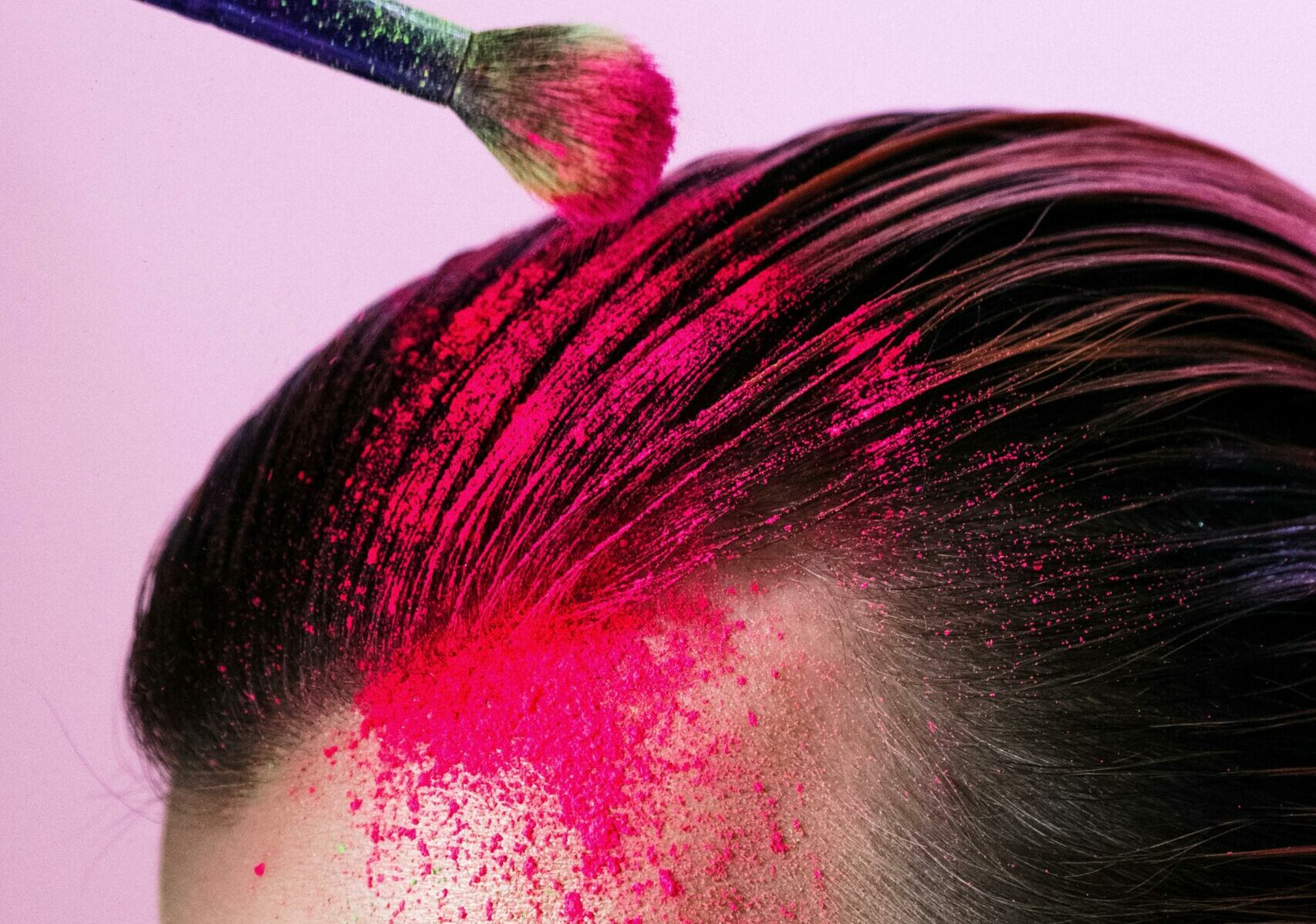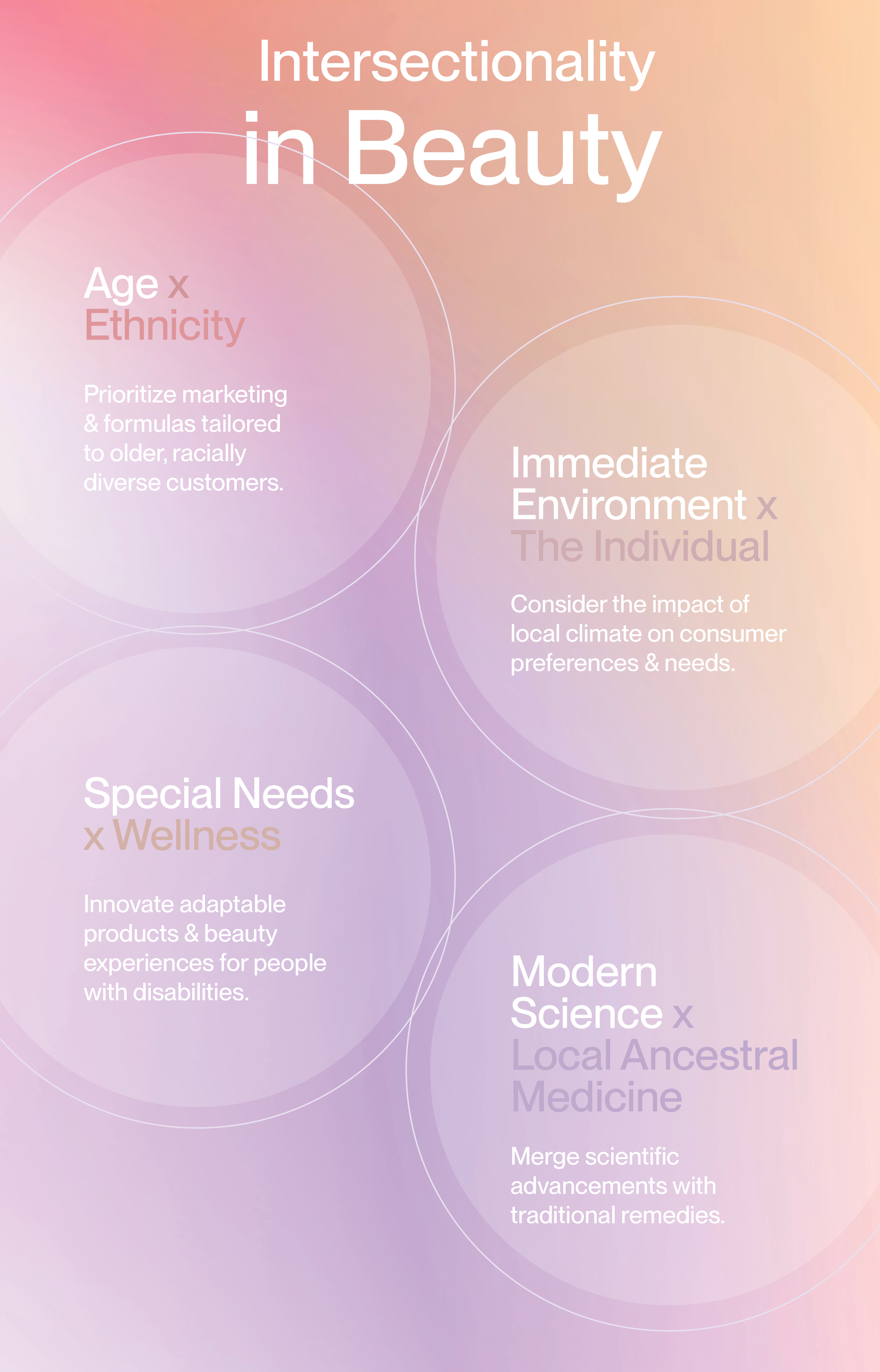- Search

Exclusivity is out. The collective calls for inclusivity, community, and mutual support within the beautyverse. It’s time for a power shift to the people.
Gone are the days when brands could write the beauty narrative alone. Consumers now demand to be co-creators of their product experiences. They seek out companies that actively break down longstanding industry biases, champion diverse perspectives, and embody shared values of community and individuality. Inclusivity isn’t just a trend—it’s a necessity. As a beauty brand, there are many ways to show up: prioritize circularity, establish marketplaces and creative hubs that honour diverse heritages, and innovate inclusive products that can be enjoyed by all (WGSN).
If you’re a beauty brand in 2024, your product packaging should be one key thing: universal. How adaptable are your designs?
By 2030 there will be over 1.3 billion people living with disabilities (with $8 trillion per year in disposable income). With inclusivity as the baseline, beauty brands need to ensure everyone, regardless of their abilities, can easily access their products (WGSN). Here are some ways to make your packaging more adaptable: easy-open lids for shoppers with cognitive or dexterity issues, or tactile markers and audio tools that share formula ingredients for the visually impaired. Text legibility, braille, symbols, textured details, enhanced grips, and even scents can help pave the way for a universal product experience that reaches far beyond outdated design norms (BEAUTYSTREAMS).

We can’t talk about inclusivity without going beyond the binary. Welcome to the rise of gender fluid beauty.
According to ad insights agency Bigeye, half of the Gen Z population in the USA agrees that we need to nix outdated gender roles and gender labels in favor of a more fluid state of mind. Genderless fragrances are on the rise, and haircare, nail polish, and cosmetics cater to self-expression for all, rather than a singular gender identity. When it comes to skincare, the focus should be on skin concerns—not sex. Universal products cater to diverse gender identities, fostering loyalty among individuals across the spectrum—be they men, women, non-binary, trans, or gender-non-conforming beauty enthusiasts (BEAUTYSTREAMS).
Beauty brands have made strides towards diversity and inclusion, but a key cohort is still being left out.
Older, racially diverse consumers are still urging brands to make space for them. According to AARP’s survey, 79% of Black boomer women agree that women their age are underrepresented in the industry, with both Black and Latina women voicing their desire for more tailored beauty products and realistic advertising. Some brands exemplify efforts to cater to diverse demographics, featuring influencers spanning young and older generations, and formulating products for the unique needs of aging, melanin-rich skin. However, dermatologists and researchers stress the need for greater scientific understanding and product development tailored to non-white aging populations. To truly progress, brands must prioritize inclusivity in both representation and research, ensuring all consumers are seen and served (BEAUTYSTREAMS).


Innovative beauty tools must go beyond standard everyday solves—they must be individualized, inclusive, and adaptable. Here’s why it matters.
Accessibility technology and personalized beauty tools are transforming the beauty and self-care space. Breakthrough gadgets like smart makeup applicators and stabilizing handles make everyday beauty routines easier for people with limited mobility and motor skills, while self-dispensing refillable toothbrushes help seniors or people with disabilities to clean their teeth with one hand. Consumers today also seek customization, and cutting-edge technology makes it possible: from AI-powered skin analyzers that give tailored product recommendations via smartphone, to at-home devices concocting highly personalized formulas on demand. These ingenious adaptations and personal touches are setting a new standard of inclusive beauty (BEAUTYSTREAMS).

